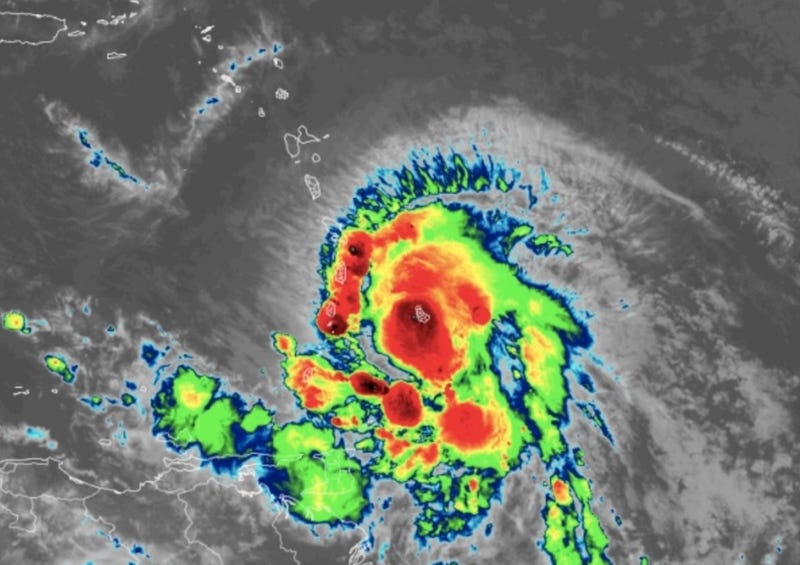
SAN JUAN, Puerto Rico — Elsa has strengthened into the first hurricane of the Atlantic season and it's battering the eastern Caribbean, where officials closed schools, businesses and airports under the threat of flash flooding and landslides. Forecasters say it might reach Florida as a tropical storm by Tuesday. Heavy rains and winds lashed Barbados on Friday as the Category 1 storm aimed for other nearby islands including St. Vincent and the Grenadines, which are still struggling to recover from recent volcanic eruptions.
Elsa was racing west-northwestward at 28 mph on Friday morning, about 20 miles west-southwest of Barbados and had maximum sustained winds of 75 mph.
The system is expected to continue on a general west-northwest path over the Caribbean and is likely to remain a hurricane while approaching Hispaniola and Jamaica this weekend.
A hurricane warning is in effect for Barbados, St. Vincent and the Grenadines, as well as St. Lucia, the National Hurricane Center (NHC) said. A sustained wind of 74 mph and a gust up to 86 mph has already been reported on Barbados, the NHC said.
A hurricane watch is in effect for southern Haiti from Port Au Prince to the southern border with the Dominican Republic.
As Elsa strengthens and the forward speed of the storm slows, the output of rain and wind will increase. Since Elsa is forecast to approach and potentially track over parts of Hispaniola and Cuba as a hurricane, the impacts may be more significant compared to those experienced in the Windward Islands.
It is in this north-central portion of the Caribbean where the track becomes somewhat less certain. The track of Elsa is likely to be influenced by the strength of the tropical system itself as well as other non-tropical weather players, including the jet stream near North America, an area of high pressure over the western Atlantic and fronts that may stall over the southeastern U.S. later this weekend into next week.
If Elsa moves over one or both of the large, mountainous islands of Hispaniola and Cuba, then the system will likely weaken. Should it track in between or south of these islands, then Elsa could maintain strength or even strengthen further. Waters are sufficiently warm to maintain and feed a tropical system throughout the Caribbean. However, AccuWeather forecasters point out that other inhibiting factors, such as wind shear or a flow of dry air from South America, could keep Elsa's strength in check or cause it to weaken.
If Elsa manages to slide south of these Caribbean islands and enter the Gulf of Mexico largely unscathed, a more potent hurricane could evolve and potentially impact the U.S. A track into the eastern Gulf of Mexico appears most likely at this time, according to AccuWeather forecasters.
Even if Elsa's strength fluctuates, it does not necessarily mean it will dissipate entirely. Tropical systems that struggle for a time due to wind shear, dry air and land interaction can rebound days later.
Beyond that, there is still some uncertainty about where Elsa will head. Even though a track into the eastern Gulf is most likely, it could potentially track northward over the Florida Peninsula -- or even just to the east of the Sunshine State.
Residents of the southeastern U.S. as well as those farther north along the Atlantic coast in the U.S. are being put on alert for potential impacts from Elsa.
AP and AccuWeather contributed to this story
